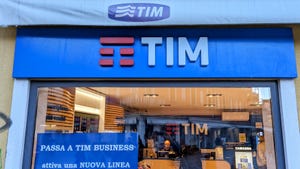G.Fast: a question of commercial radio, manholes, prison sentences and indoor vs outdoor engineers
As interest in G.Fast grows we see that it can be deployed in three basic ways, each of which have very different costs and deployment models and so have different levels of feasibility. Each of the three models does, however, maintain the similarity of using the existing copper network only for a very short distance.
August 14, 2012

By Steve Wilson
As interest in G.Fast grows we see that it can be deployed in three basic ways, each of which have very different costs and deployment models and so have different levels of feasibility. Each of the three models does, however, maintain the similarity of using the existing copper network only for a very short distance.
This is a primer on the emerging copper based fixed broadband access technology, but for those just starting out with the topic I recommend that you first read this earlier post.
Scenario 1: Fibre to the front yard
In this scenario fibre is bought very close to a single dwelling unit, so to the front yard for example, but still terminates before the outside wall of the property. The problem here is that not only will each subscriber need a G.Fast modem but they will also require a device that starts the G.Fast signal in the front yard where the fibre terminates and the copper begins. With FTTH an OLT can serve thousands of customers but with G.Fast in a fibre to the front yard scenario the equivalent device would only serve one customer, potentially meaning costs are higher than for FTTH.
So why bother with this scenario? There might be the danger of lawsuits with installing fibre right the way into the home if engineers cause damage to the property. Some operators also have different classes of engineers, with the indoor engineers that go into people’s homes and have a customer facing role being more highly paid than outdoor engineers. With G.Fast in a fibre to the front yard scenario only outdoor engineers would be required so this could tip the cost balance in favour of G.Fast over FTTH. Nonetheless the business case for fibre to the front yard looks difficult, although not impossible, depending on the special market circumstances.
Scenario 2: Fibre to the building
This is a more familiar scenario and appears to be a more solid target for future deployments. G.Fast could be used as an in building technology after fibre has been bought to the basement of a multi dwelling unit. But here there is a different challenge to fibre to the front yard. This is because G.Fast will use higher frequencies, beyond the 30MHz available with VDSL, and these higher frequencies are more prone to cross talk or interference between different copper lines. Of course in a fibre to the front yard scenario there is only one line so this is not a problem. Bottom line, for a fibre to the building scenario so called G.Fast vectoring would be required to eliminate the cross talk.
But G.Fast in a fibre to the building scenario could offer additional bandwidth over fibre to the building with VDSL and would also have benefits over deploying FTTH, because rolling out fibre within an MDU can be problematic. An example of the problems with rolling out fibre within MDUs is from the Netherlands where individual tenants’ permission was required to pass a particular building. But not all residents could give permission. Why? Because one of them was serving a prison sentence. G.Fast can avoid these kinds of logistical nightmares by using the existing copper within the building.
Scenario 3: Fibre to the distribution point
In this scenario an active device could be installed at a distribution point where the copper lines can be accessed, such as a manhole or an overhead pole, and then be used to serve 10 to 20 customers. Again because of the existence of multiple lines G.Fast vectoring would be required to eliminate the cross talk. One potential issue here is customers may complain that yet more telecom equipment is being installed near their homes. Alcatel Lucent believes this problem is surmountable, however, as they already offer a 48 port cabinet which is only 50-60cm high, 30-40cm wide and 20-25cm deep so with the smaller number of G.Fast ports this could be made even smaller.
Because the active equipment would serve 10-20 customers this would make deployment costs per subscriber lower than in the fibre to the front yard scenario but likely higher than FTTB where in a large MDU higher numbers of customers could be served with the G.Fast active equipment. This means that the feasibility of fibre to the distribution point G.Fast lies somewhere in between the 2 other models.
Something to keep regulators at work
Whilst there are 3 very different ways to deploy G.Fast each may present some issues with which regulators will be likely required to deal. The G.Fast active equipment will use reverse powering from the subscriber’s modem. The thought of providing electricity to an operator may be off putting for some subscribers and may also be an area that regulators look at.
Another issue is that because G.Fast will use higher frequencies this may cause interference with spectrum that is being used for other purposes such as commercial FM radio, which uses the 87.5-105MHz spectrum band, the military and public safety. Regulators will need to decide which spectrum G.Fast will be permitted to use and the other parts will need to be notched, or blocked out, which means a loss of bandwidth for G.Fast.
Related to this point are issues of compatibility between G.Fast and VDSL. The 2 technologies will likely coexist because G.Fast is not designed as a substitute for VDSL since it is really intended for shorter loops of up to 250m. But notching will be required in the spectrum that VDSL is using, typically 12 or 17MHz. This will mean that in effect G.Fast will lose the bandwidth that VDSL could provide in this spectrum. Therefore although the ITU defines a target aggregate downstream and upstream bit rate for G.Fast of 500Mbps at 100m the practical reality will be lower speeds where VDSL has been deployed.
Conclusions
Let’s be clear: G.Fast remains a number of years from widespread deployments with these only likely in 2016. Nonetheless there are clearly many issues that operators have to mull over when considering whether to deploy G.Fast. The central issue is whether the additional bandwidth that G.Fast can provide compared to technologies such as VDSL vectoring will be required by 2016. Informa TM generally remains cautious about consumer demand and willingness to pay for higher broadband speeds, but of course operators in different markets all face very different challenges.
A more detailed version of this analysis will soon appear on Informa Telecoms & Media Broadband and Internet Intelligence Centre. Any regulators, operators or vendors keen to discuss these issues more please do not hesitate to get in touch.
You May Also Like








.png?width=300&auto=webp&quality=80&disable=upscale)


_1.jpg?width=300&auto=webp&quality=80&disable=upscale)